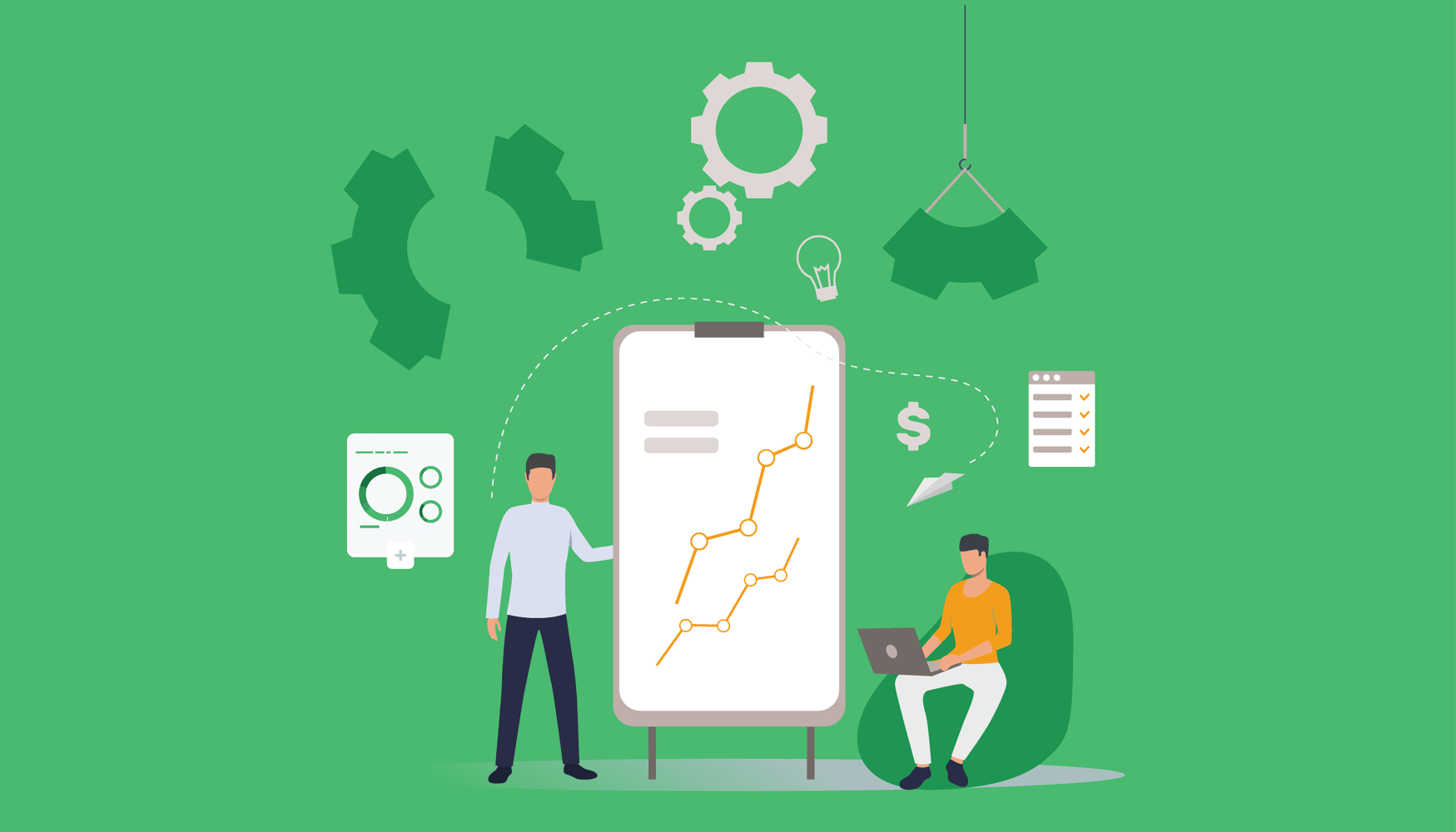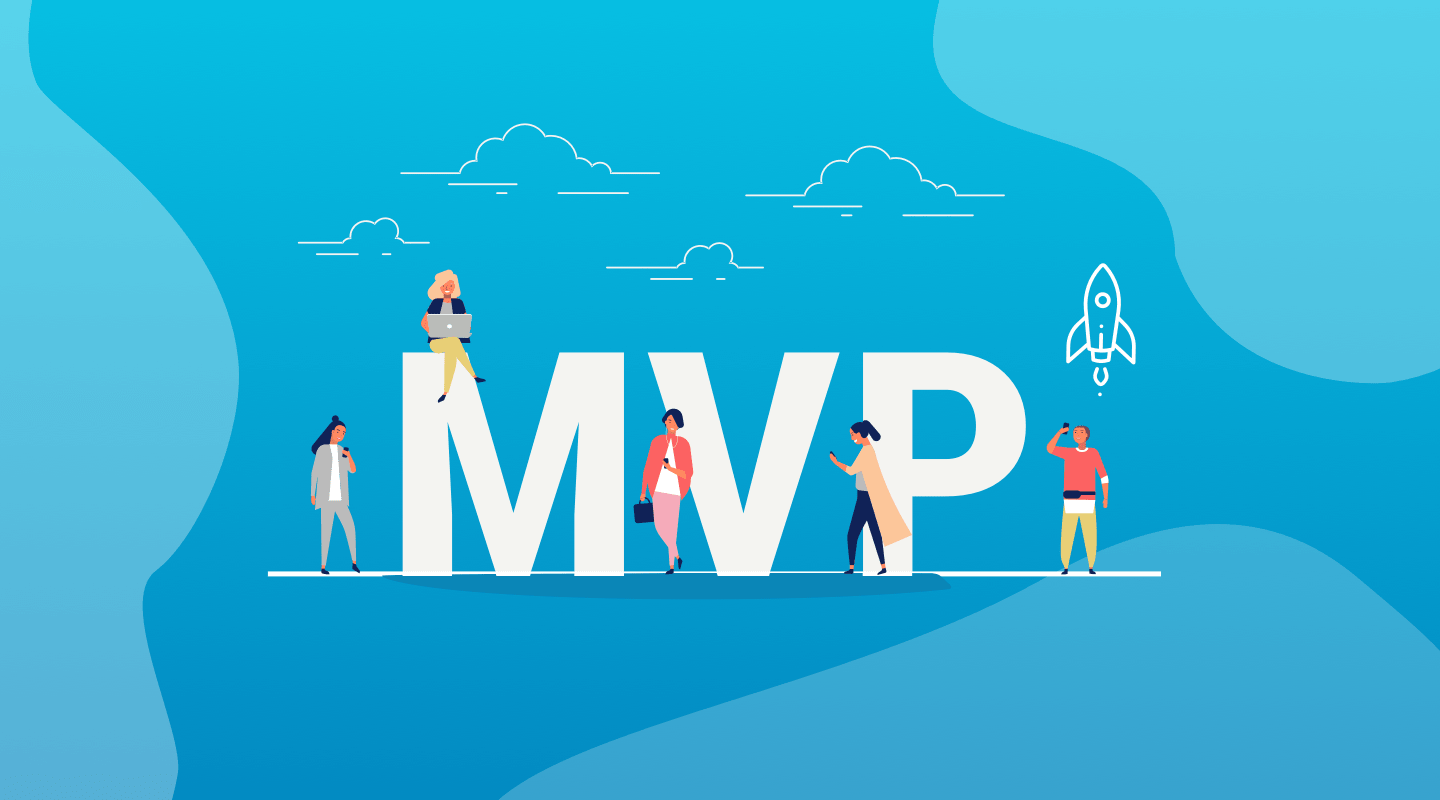How many times did you have an incredible idea for an app and missed a chance to make it work? Whenever we spend hours in a bank or waste time for finding the right item in a store, we dream of software that would make these tasks much easier. While you are toying with the idea of establishing your own business, somebody has already done it.
Going to market quickly with a functional product is essential in the rapidly changing business world. MVP may become a perfect solution for startups and companies working in an agile environment. The meaning of MVP is frequently misunderstood. Nevertheless, when handled well, it could provide you with a clear vision on how to develop your product, which features to focus on and what audience to target.
What does MVP mean?
The abbreviation “MVP” stands for a minimum viable product. It comes with a basic set of features to introduce the concept of software to your users.
The notion of “MVP” was first coined by Eric Ries in his bestselling book “The Lean Startup”. While all businesses were striving to develop fully-fledged products, the author came up with a revolutionary idea of developing software with basic functionality. Along with agile methodology and A/B testing, MVP was quickly embraced by organizations of all sizes.
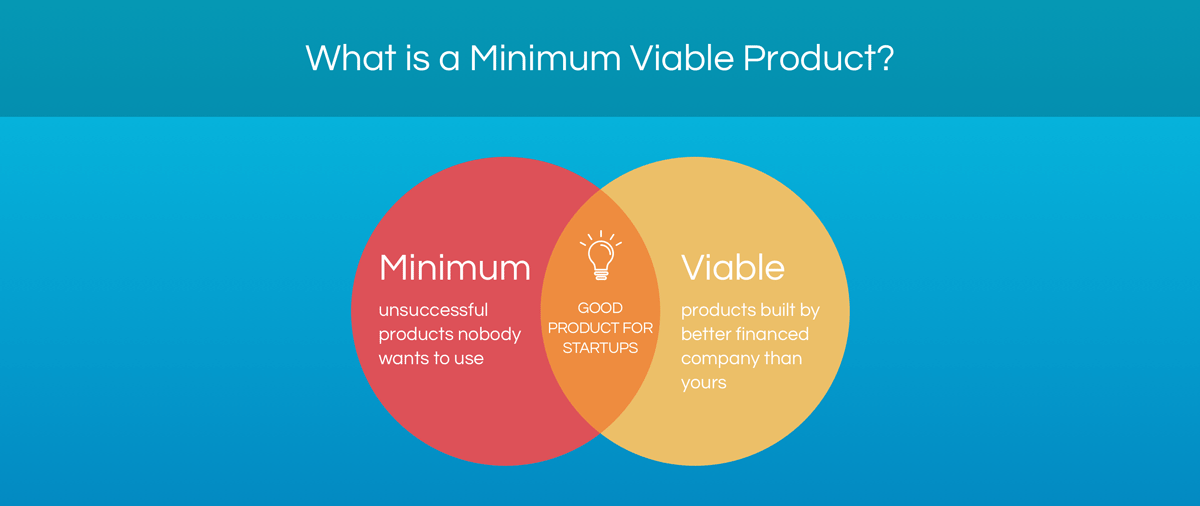
Although the fundamental principles of MVP might seem simple, many experienced entrepreneurs often misunderstand its meaning. If you want to clarify what MVP means, you should remember the following underlying principles:
- MVP always comes with core functionality that can be easily tested by your users or investors
- It translates the main idea behind your app or software
- Even though your product comes with restricted functionality, it should solve a particular problem and meet its primary goal
- MVP never comes as a fully-fledged product as it is always improved and developed after the analysis of users’ feedback.
Benefits of Building a Minimum Viable Product
By developing MVP at the early stage of your project, you definitely reap the benefits:
- Shorter Time to Market. While your competitors are only struggling to figure out the meaning of MVP, you can already go to market with your product to outpace your rivals. This step provides you with a substantial competitive advantage that will eventually define the project’s success.
- Get a Chance to Test your Product Idea. After the first customers use your product, you can encourage them to give feedback and develop extra features to meet their specific needs.
- Enrich Your Client Base. In case your app is successful, early adopters of your product become your clients and promote your software to other users through word-of-mouth advertising.
- Cost-Efficiency. MVP in software is highly beneficial as it performs an important cost-cutting function. Before an official product release, you can launch an MVP to define what features are the most essential to your target audience and avoid wasting money on the development of unnecessary elements.
- Conduct Market Research. With MVP, you are always updated on all the market trends. It keeps you in the know regarding customers’ wants and needs so that you can develop a product that perfectly matches your audience.
- Attract Investors. MVP is a great way to attract investors to your project. Provide them with functional product which they can “touch”, test and let them evaluate your idea. Thus, you can quickly gain trust and attract more interested entrepreneurs to your project.
How to build an MVP?
The primary issue behind the MVP development is to come up with an idea for your app and focus on core features that make your product unique. Nearly 60% of startups do not succeed because they fail to meet market needs.
To avoid this problem, you should identify what your target audience needs and come up with a product that carries out the primary functionality to the user. Thus, you will be able to test your idea and continue working on your app together with first adopters.
Follow our 5-step plan to make sure you are on the right track with MVP development:
- Step 1. Find the problem your target audience faces
- Step 2. Conduct research/feasibility study
- Step 3. Define the core features of your product
- Step 4. Build the MVP
- Step 5. Gather feedback pool and evaluate the results
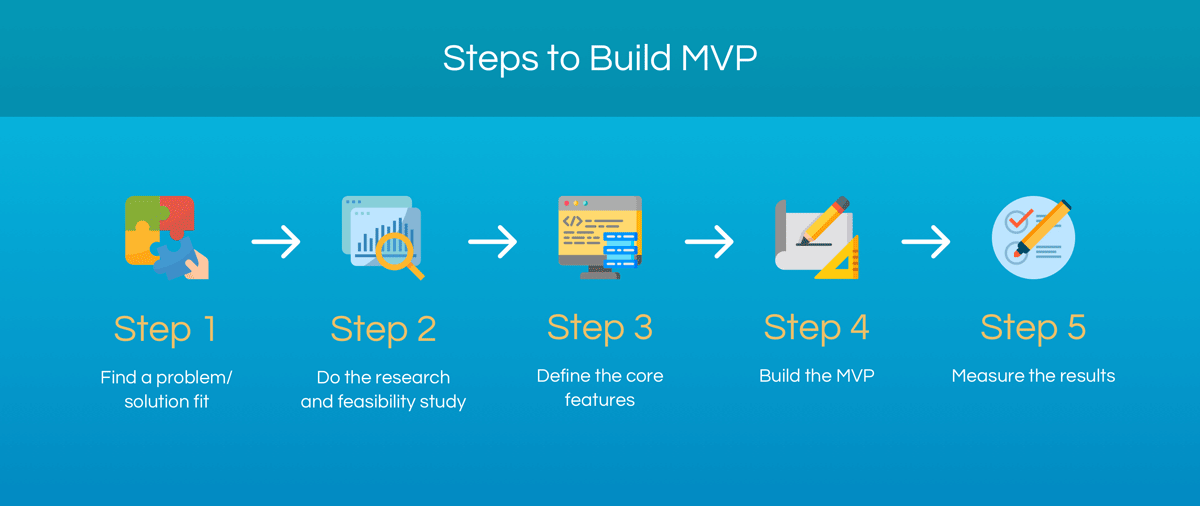
How does MVP work?
Stage 1. Idea Evaluation. Everything starts with an idea. At the first stage of MVP development, you should ask several questions— What does MVP mean? What is the product’s core function? Who is going to use my app? What features are “must-have” and which are “nice-to-have”?
When you get these questions answered, you can define the core features for your software and move on to prototyping.
Stage 2. Prototyping. After you decide on core features for your software, you can get down to the development process. The prototype is not intended for mass usage as it is developed only for QA purposes. It allows you to test features, spot inefficiencies and fix bugs before your MVP goes to market.
Stage 3. Building MVP. Although the notions of a “prototype” and “MVP” are frequently used interchangeably, they are quite different. Unlike a prototype, MVP is meant to be a fully-fledged product with limited functionality. It does not demonstrate a full spectrum of features, but it is designed to perform a particular function to meet your audience’s needs.
Stage 4. Development and Improvement. When you develop a prototype, define your MVP’s place on the market, and go with it to your customers, you should collect feedback pool that would be enough to evaluate the relevance of your product idea to the target audience. Does it meet your clients’ needs? How do your users benefit from a new product? Is it different from your competitors?
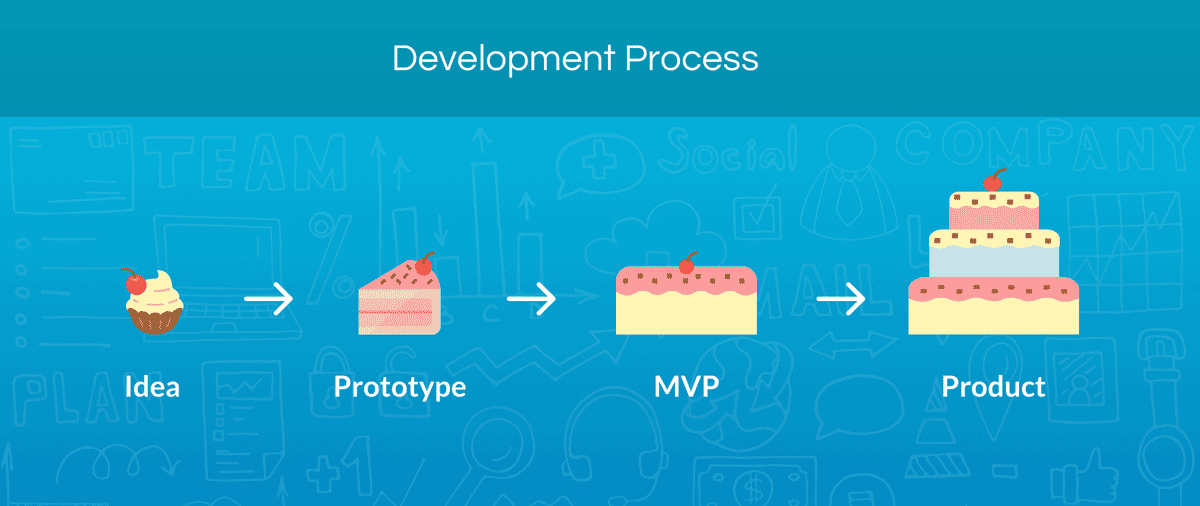
Equipped with the information provided by first adopters, you are ready to extend the functionality and add value to your product.
How much time does it take to build MVP?
The timeframe for MVP development highly depends on the scalability and complexity of your future product. If you are bearing in mind an idea of a simple app that solves a single problem, then your software might be developed within one or several months. However, when you have big goals and aim to deploy a multi-functional app based on a revolutionary new idea, the development process may last up to 6-7 months.
How much does it cost to build MVP?
The same principle can be applied to budget estimation. MVP development cost depends on selected tech stack, features, team composition and developers’ experience.
If you browse the web, you might find developers from Asia charging $11 per hour for getting their work done, which is a mean rate in the United States. But let’s be painfully honest. When you delegate your MVP to inexperienced specialists, you put the quality of your product on stake. Thus, you can count on an hourly rate of $50 for a developer from Eastern Europe, while American and Latin American specialists’ rates start from $60-70.
Even when you choose a “fixed price” pricing structure, the cost of the whole project might vary somewhere between $10 000-70 000 depending on technical requirements.
MVP Examples to Follow
Numerous large and renowned companies started as MVPs at the very beginning. Let’s have a closer look at the greatest examples of minimum viable products:
- Instagram. When Instagram was first invented, the app performed a photo-editing function only. Users could download pictures, apply filters and save photos on their devices. After the product gained popularity among first adopters, developers improved it to make one of the greatest social media apps.
- Amazon. The company started off as an online store selling books to clients around the world. The primary goal of Amazon was to challenge Barnes & Noble, which was stuck in the brick-and-mortgage era. This MVP caused a real hype on the market, which allowed the company to progress and add new features to the product.
- Zappos. Even when you don’t have inventory in your store, you can become successful with your product. The founder of Zappos took pictures of items he wanted to sell and placed them in his store. When customers ordered shoes, he went to a warehouse to buy them and sent to a client.
- Airbnb. Airbnb appeared as a user-friendly and convenient way to rent accommodation without middlemen. Brian Chesky and Joe Gebbia had difficulties paying their rent. That is when they decided to establish their own business by sharing a fashionable house with their guests. The couple created a single-page website where they advertised their services. Surprisingly, it became popular very quickly, which was the impetus for business owners to grow their venture.
Dos and Don’ts for Startups in MVP Development
Dos:
- Keep focused on core functionality
- Identify the gap in the market
- Take into account your monetization model
- Conduct market research
- Monitor user behavior
- Gather feedback loop
- Shorten your time to market
- Keep in mind your marketing strategy
Don’ts:
- Add extra functionality
- Work on nitty-gritty details that delay market entry
- Copy your competitors’ product
- Forget about your target audience
- Launch non-functional product with bugs
Are you looking for a reliable software partner to launch your MVP?
As a leading startup laboratory, we have over a decade of experience on the market with a team of 300+ skilled in-house engineers, extensive tech stack and more than successful 300 releases. LITSLINK specialists will always provide you with support in MVP development, help to identify core features to attract first adopters and guide you through the evaluation process.


